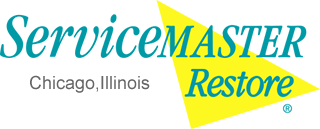When you're dealing with water damage, you want to dry out any excess moisture immediately.
Water restoration technicians do this by using specialized equipment that achieves several objectives during the drying process:
- Get the air circulating in the space to promote drying.
- Discourage the growth of bacteria and mold spores.
- Reduce the humidity level in the area.
- Keep the temperature at a suitable level for fast drying.
- Promote drying below visible surfaces.
What kind of water damage restoration equipment will a water damage specialist team like the professionals at ServiceMaster of Lincoln Park use? Check out the common equipment solutions listed below.
Water Pumps
If you still have any standing water in your residence or office space, your water damage technicians will immediately pull as much of it out as possible. To do this, they'll use water pumps that make a Shop-Vac look like a kid's toy!
High-volume water pumps allow for immediate extraction of water and other liquids. They can also prevent dirt and mud from piling up — for example, in basements suffering from backed-up sewers or poorly-working drains.
This type of equipment will probably not be left on your property, as it's customarily attended by a specialist who has been trained on its proper usage.
Industrial-Quality Fans
These aren't your ordinary house fans. Rather, they are specialty fans that force the air to circulate quickly. Not only do they kick up a wind in the area, but they keep moisture from settling on any surfaces.
Depending on the size and scope of your water restoration project, your preferred water damage restoration specialists may use more than one fan as an air mover.
Because fans often have to run for many hours or days to get the job done, fans may be left on your premises with instructions not to turn them off. Follow your technician's request to resist hitting the "off" switch. Otherwise, you could put your property in harm's way by allowing moisture to seep farther away from the surfaces.
Super-Strength Dehumidifiers
Mold growth happens as humidity rises, so it's best to keep humidity levels as low as possible in places that have been flooded or have incurred any kind of water damage.
Dehumidifiers essentially pull the moisture from the air and condense it back into water that can then be properly disposed of. The dehumidifiers used by water restoration technicians are very strong, something that's necessary to ensure dryness as fast as possible.
Like fans and similar industrial strength air movers, dehumidifiers take some time to do their work. Therefore, you shouldn't be surprised if your professional water remediation specialist tells you that the dehumidifier will stay running on your property until the humidity has reached an acceptable level.
Air Scrubbers
When water damage occurs, the water and the drying process can release harmful gases and particles into the air. These particles can lead to lower job quality and impact your family and water technician's health.
Air scrubbers are powerful tools technicians use to clean the air. They draw in the contaminated air a few times every hour and force it through a series of filters to remove any bacteria, particles or gasses that could be dangerous to inhale. These three filters help remove most airborne particles to give you confidence in the air you breathe.
Portable air scrubbers are easy to use and highly efficient when used with your dehumidifier. They are easy to move and come in different sizes and strengths, depending on what you need. The standard time it takes to clean the air ranges from 24 to 48 hours, depending on the number of scrubbers. Depending on the area's size, it may require more time and scrubbers to clean it completely.
Moisture Meters
Water can get into many different areas in your walls or floors while going unnoticed. Increased moisture can lead to mold growth or material degradation, which could cause further damage. You or your technician may use a moisture meter to find high moisture areas following water damage.
There are two types of moisture meters — pin-type and pinless — and which one you use is determined by whether or not the material tested can or should be punctured. One uses two pins to penetrate the material, while the latter uses an electromagnetic signal.
These meters effectively measure the moisture present in plaster, concrete, wood, soil and more. Knowing what areas have a higher moisture content is critical to preventing any more damage to your home or office space. Once you find any moisture, you can talk to your water specialist and come up with a plan to remove the moisture and secure the area.
Desiccants
Maintaining a dry environment is essential in preventing bacteria, mold and fungus growth and degradation. This moisture can create a space damaging to cosmetics, electronics and even apparel. Desiccants can successfully eliminate this moisture and protect your valuables.
A desiccant is a hygroscopic material that absorbs the air's moisture and works to preserve a dry environment. Some types of desiccants include silica gel, activated charcoal and calcium oxide. While you can commonly find them in packets placed in food packaging, they can also sit throughout a home or office to remove moisture in certain areas.
Your water specialist can place desiccant packets around the affected area to remove any moisture present. Because they can only hold a certain amount of water, they often change color when full, informing your technician they are ready to be replaced.
Follow the Drying Process for a Successful Result
Want to have the best result you can after experiencing flooding or other water damage? Always listen to your water damage restoration specialist and put your trust in their equipment.
Need someone to come to your home or business quickly? Contact ServiceMaster of Lincoln Park, day or night, for speedy outcomes.


Comments are closed.